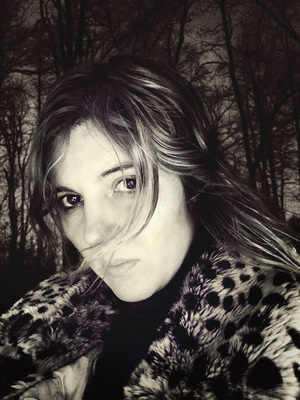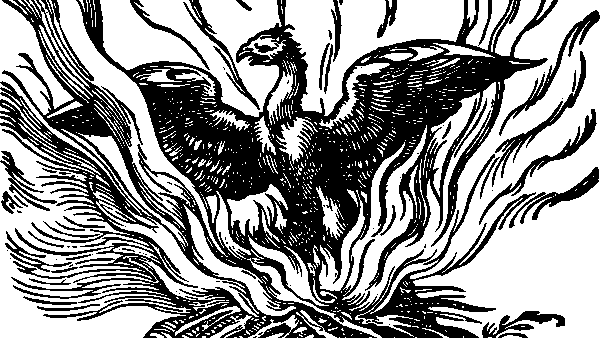Imagine Jack Kerouac, William Burroughs and Hunter Thompson engaging in a wild, drug-fuelled orgy somewhere out in the Arizona desert, and by some mystical process conceiving a daughter who then turns around and gives them the finger, inverting their male-dominated world and creating a road trip novel for the 21st century, complete with a strong female lead who might have made a great companion for Sal and Dean if they hadn’t been so busy gunning for girls and turning their patronizing male gazes on beautiful honey-haired darlings.
Actually, don’t imagine that, because it’s slightly disturbing. But if you were by any chance sick and strange enough to imagine that, you’d probably come up with something like Dodge and Burn by Seraphina Madsen.
The novel is framed as a mystery about a missing heiress, but really it’s more about the heiress trying to find herself via a bizarre mix of drugs, visions, mythology, hallucinations, dreams, occult experimentation and a whole lot more. Eugenie is the most unreliable of narrators because we’re never quite sure where the boundary between reality and hallucination lies, or whether there even is a boundary in her case, or whether she or her sister Camille even really exist in the way we normally understand such things.
All of this is quite understandable when you hear about her childhood, or at least the sketch that we’re given: her mother killed by murderous bees, her father missing for an unfeasibly long time on an Antarctic expedition, she and her sister then being adopted by a creepy psychopath / mad scientist, Dr Vargas, who abuses them in horrific ways while conducting bizarre experiments on them. When Eugenie describes this abuse, she is quite matter of fact, as if being kept naked in a roasting pit for two weeks is no different from being ferried to soccer practice.
When Eugenie and Camille conspire to kill Dr Vargas in the same way their mother died, by setting killer bees on him, it seems somehow inevitable. But then, is he really dead? And why does Camille mysteriously disappear right afterwards?
Here’s Eugenie’s theory:
I was suddenly struck with the thought that perhaps the rituals, potions, and practices had taken a turn. Had she managed the sophisticated manoeuvre of displacing herself in space and time? Yes, I believed it was certainly possible Camille had disappeared and taken all physical evidence of her existence with her only to resurface in another location.
And so begins the process of trying to get back in contact with Camille through more rituals, potions, and practices, leavened with healthy doses of drugs, raves, snake bites, stealing money from casinos, visits to marijuana farms, and much more. The process will drive the rest of the book.
Also driving the rest of the book is Eugenie’s relationship with Benoît Del Mar, a.k.a. Venus Acid Boy. Benoît feels a bit like Marylou or Camille in On the Road: a character who plays a large role in the action while remaining firmly subordinate to the main character and somewhat inaccessible. It’s a symptom of what I talked about earlier, the inversion of the male gaze, and it’s very nicely done. Benoît is often described through the female gaze, which alights on his close-cropped blond hair, the beautiful curve to the back of his head, or “Benoît bare-chested with a horned helmet in his hand” when Eugenie first meets him at a clifftop party in southwestern France.

When reading Dodge and Burn, you need to be willing to spend a very long time in the head of a character who may or may not have any idea what the truth is. You’ll also need to have a strong tolerance for the wild and fanciful. No character is ever ordinary, no event ever expected.
In a strange way, I found this unexpectedness itself becoming a little predictable sometimes—of course the bland Mr Connors at the bank will be driven crazy by a glass shard in his mind and start warning Eugenie about a mythical creature with red hypnotic eyes.
Sometimes I found myself wishing for a little ordinariness to be sprinkled in there, to allow the truly extraordinary parts to stand out a little more. It’s like when you eat a strong curry and you want some plain rice to balance it out. There’s no plain rice in Dodge and Burn. Flavours are just piled on top of each other, and sometimes they can overwhelm the taste buds.
The result is a novel that is wild, fascinating, and surprising. It can also sometimes be exhausting and frustrating. But one thing you can count on is that it’s never, ever dull.
By the way, I plan to interview the author on the blog soon. If you have any questions for her, feel free to leave them in the comments and I’ll pass them along. Or feel free to leave other comments—have you read the book? Do you think you’d like it? Does it raise any issues for you?



